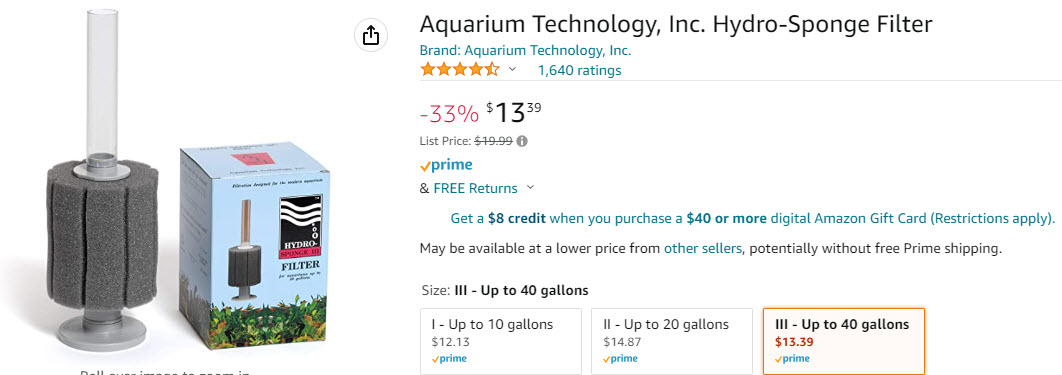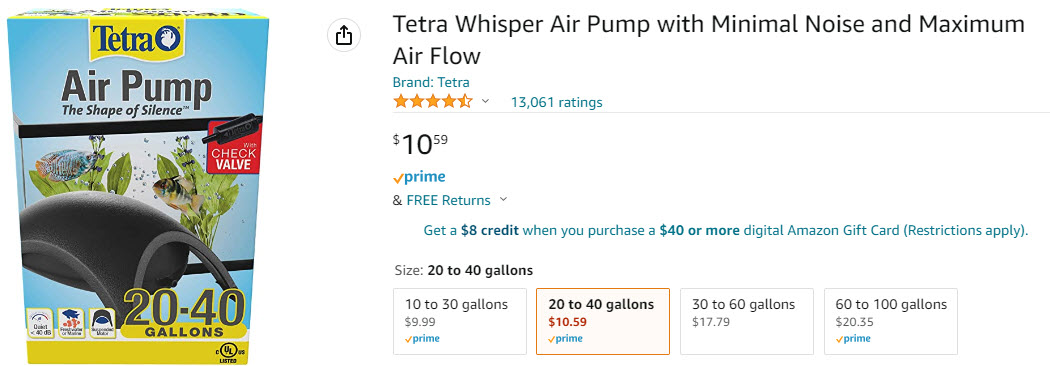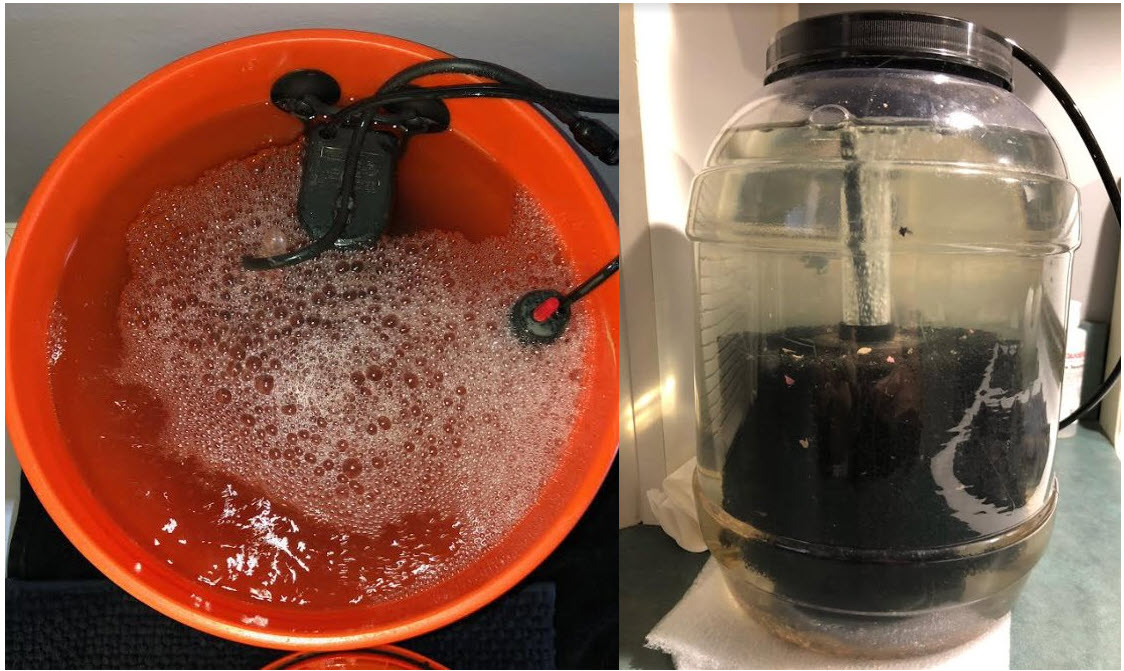One problem many get into is how to reasonably make a fish-in cycle work to add a decent number of fish in three to six weeks. If one does fish-in cycling properly, you only lightly feed a small number of fish. So how does one get up to a decent number of fish in less than four to six months? Several commentators on this website have asked this very question. So I’ve come up with “milk jug sponge filter cycling”.
The basic idea is to do rapid cycling of a sponge filter outside the aquarium in a milk jug (note some sponge filters are too tall for a one gallon (4 liter) container and need to be done in a two gallon (8 liter) jug, a five gallon (20 liter) pail or a plastic waste basket). Then, when the sponge filter is cycled, add it to the main aquarium AS A SECOND FILTER. One can then take the main aquarium up to a decent number of decent-sized fish after a week or two. Then, four to six months down the road, when the main filter is “mature” one can remove the sponge filter from the aquarium.
Procedure
For this procedure, obtain a decent-sized sponge filter with a large pore-sized sponge, something like one of these filters.
.

Note that it is desirable to have an airstone creating the bubbles. But some sponge filters have a spoked arrangement in their core which requires some cutting in order to get an air stone down there. If that isn’t done they produce large bubbles which “clump and glug”. These bubbles are very noisy and do not lift the water very well.
Obtain a decent-sized air pump, something like this model:

Steps to the process:
- Take a gallon (4 liter) jug and cut off the top, making a small one-gallon container.
- Add the sponge filter and the air pump with an air stone to the jug.
- Put in a heater and heat it to 85 to 90°F (29 – 32°C)
- Fill the jug and turn everything on.
- Add one half teaspoon of inoculate: inoculate from existing filter (brown “mulm” in water is great!), black soil from a potted plant, pond mud, compost, etc.
- Add a barley grain sized smidgen of garden fertilizer, one time add only.
- Add ten drops of ammonia, a barley grain sized smidgen of ammonia salt, or a teaspoon of human urine to the jug every day for one week. Then make this addition every three days for a maximum of four weeks.
- The pH for cycling should be 7.4 to 7.8 and MUST be above 6.5. So, add sodium carbonate to keep the pH up. The cycling can consume a lot of sodium carbonate.
- Do not change the water.
- It will take two to five weeks and the water in the jug should clear.
- You can stop the additions when the ammonia hits less than 0.5 and nitrite hits zero OR at four weeks, whichever is shorter.
- DO NOT SQUEEZE THE SPONGE.
Then put the sponge into your main aquarium. Note this process can also be done in a five gallon (20 liter) bucket. Just multiply all the additions by five. One can also obviously do more than one sponge filter in a five gallon bucket for a larger aquarium. Keep the set-up of the sponge filter the same in the new aquarium. If the filter was running on airstones in the jug, do not switch to a powerhead in the aquarium. Better to just put the powerhead on in the jug.
I have used baking soda (sodium bicarbonate) to raise the pH for many years. It turns out this is not a optimum course. It is better to add powdered sodium carbonate. Carbonate is supposedly better than bicarbonate for keeping pH neutral as it will react much faster at a pH of 6.8 to 7.6. Note that ammonium carbonate, potassium carbonate, and powdered calcium carbonate (agricultural lime, not “slaked lime”) will also work well.
Do NOT add sugar or fish food to this cycling process. The carbohydrates in these additions give a very soft biofloc/biofilm that gets destroyed by even the smallest movement of the sponge filter. Ammonia gives a much more adherent film of beneficial bacteria.
Note that is is normal for such a filter to cause a small ammonia spike when added to the main aquarium. The spike will only last a day or two and will not harm the fish unless the pH is over 8.4.
An Example
One reader cycled one sponge filter in four weeks and one sponge filter in twelve days. The amount of ammonia processed by these filters was sizable. So either one could be added to a fish-in cycled aquarium and make that aquarium a mature aquarium capable of handling a heavy fish load.

The bucket on the left had a powerhead operated large sponge filter in it. The two gallon (8 liter) jug on the right was a smaller air lift operated sponge filter. The two gallon cycled to a very heavy load in five weeks with manure compost as the starter. The five gallon (20 liter) was then started up with mulm brown water from the two gallon sponge filter. The five gallon bucket cycled in 12 days.
The “secret ingredient” here in the five gallon (20 liter) bucket is undoubtedly the brown mulm water from the two gallon (8 liter) test. I also suspect the manure was sterilized as my testing showed much faster cycling with manure compost.


